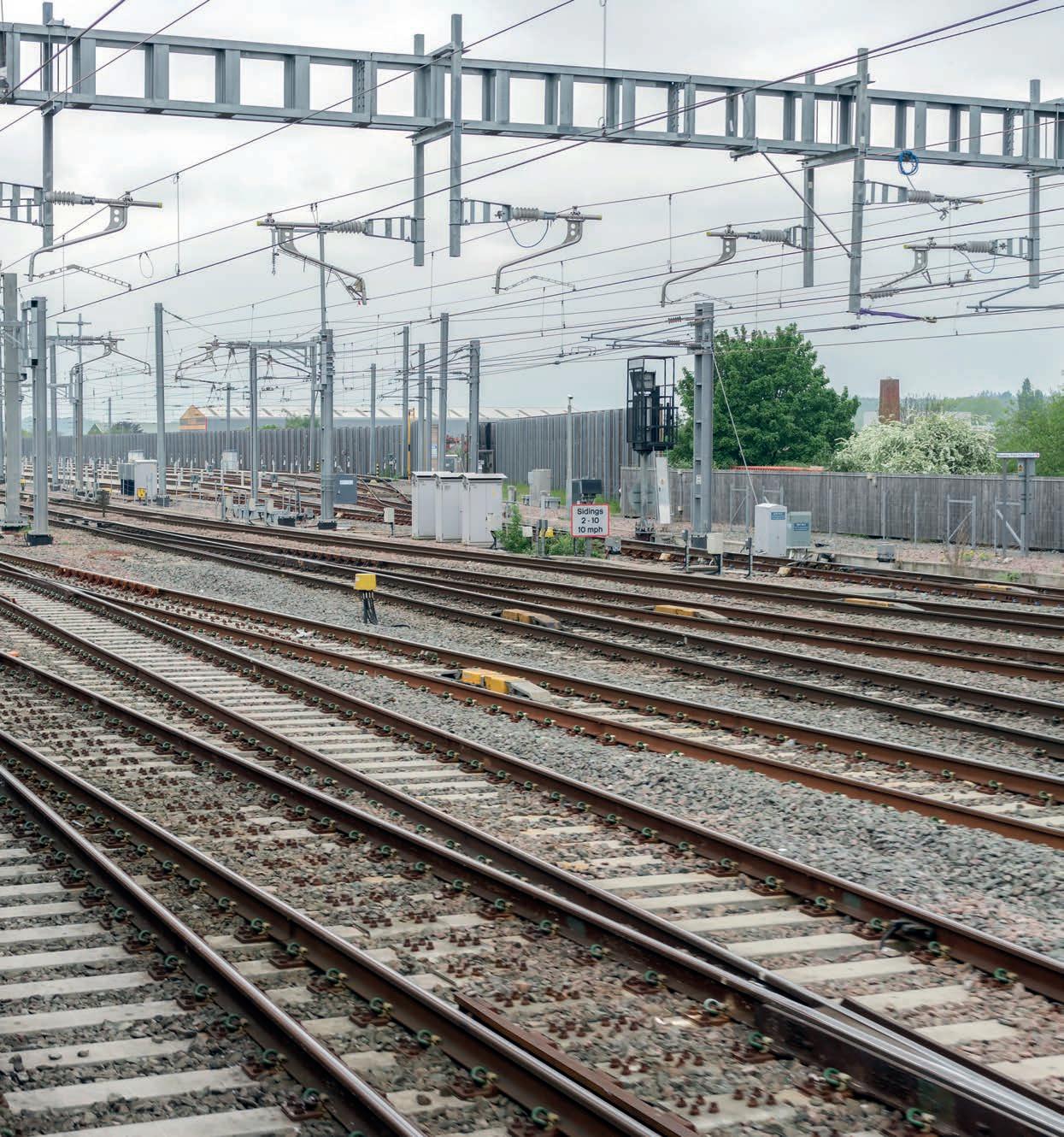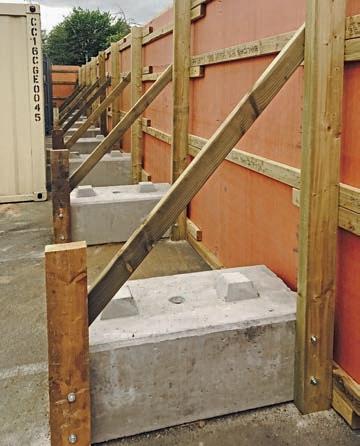
5 minute read
Modernising Stations with Smart Lighting
With rising fuel prices, increased congestion, and the growing demand for sustainable transport, rail travel has become a crucial part of the shift to greener mobility
However, many outdoor station environments still rely on outdated or inefficient lighting systems that fail to provide comfort, safety, or energy savings. Improving the way these spaces are lit can play a major role in boosting commuter confidence, reducing operational costs, and supporting broader decarbonisation goals.
Urbis Schréder is a trusted provider of high-performance outdoor lighting solutions. As part of the global Schréder Group, the company combines deep technical expertise with a strong focus on design, sustainability, and smart technologies. With decades of experience in delivering lighting for transport networks, city streets, and public spaces, Urbis Schréder helps partners create safer, more connected environments that are futureready and environmentally responsible.
Supporting rail networks with futureready technology
Lighting plays a critical role in making railway infrastructure safer, more efficient, and more welcoming for passengers. From station platforms and car parks to tunnels, footbridges, and junctions, each space within a station environment requires a tailored lighting approach. Effective illumination improves visibility, reduces crime, supports accessibility, and enhances the overall passenger experience – particularly during night-time and off-peak hours.
At the same time, the rail industry is under pressure to reduce energy consumption and operating costs. Upgrading to LED systems and integrating intelligent controls can deliver both environmental and financial benefits, ensuring lighting is only used where and when it’s needed.
Smarter Control with Schréder’s EXEDRA
A key tool in this transition is Schréder’s EXEDRA, a smart Central Management System (CMS) developed by Schréder. Built on open standards, EXEDRA enables full remote control and monitoring of lighting infrastructure. Operators can track realtime energy consumption, detect faults, and apply adaptive lighting strategies such as dimming during off-peak periods.
This level of control supports up to 85 per cent energy savings while improving operational resilience and service continuity. Maintenance teams can respond more quickly to issues, and lighting usage can be fine-tuned to match actual conditions –reducing waste and maximising safety.
Solar Lighting for Rail
To further support sustainable development, Schréder has partnered with solar lighting specialist Photinus to offer advanced off-grid solar solutions tailored for rail environments. These systems are ideal for areas where trenching or cabling is not feasible, such as remote access routes, overflow car parks, or low-traffic platforms.
By blending Photinus' proven solar technology with Schréder’s smart lighting expertise, the partnership offers robust, long-lasting solutions that reduce emissions without compromising performance.
With every solar-powered luminaire, this collaboration advances the rail industry’s shift to clean energy and low-carbon infrastructure – creating a sustainable legacy for future generations.
High-performance lighting across all station zones
Railway stations are dynamic environments. Each zone – from ticket halls and pedestrian underpasses to drop-off points and cycle storage areas – presents unique challenges in terms of safety, visibility, and user comfort.
Well-designed lighting plays a major role in making passengers feel secure and confident, whether they are arriving early in the morning or late at night. LED solutions provide consistent brightness, better colour rendering, and improved directional control, helping to eliminate dark spots and improve the quality of the space.
At the same time, energy-efficient systems reduce running costs and maintenance requirements. Long lifespans and durable components mean fewer interventions and lower disruption to station operations.
Bridging the Gap with Light: Billingham Station’s Transformation
Billingham Station, a key hub with connections to Newcastle and Whitby, recently underwent its most significant upgrade in over 50 years. Delivered by AMCO GIFFEN, the project introduced a fully accessible, step-free route between platforms, including two lifts to support passengers with reduced mobility, luggage, bicycles, and pushchairs.
To illuminate the upgraded footbridge and ensure a safe, welcoming environment, Urbis Schréder’s ALINEA LED Handrails were installed. These discreet, integrated lighting solutions blend functionality with sleek design, providing continuous, glarefree illumination along the pedestrian route.
With more than five decades of experience in rail lighting – including early market-defining projects like Jacobs Ladder in Cornwall – Urbis Schréder has continually refined and advanced its lighting solutions, ensuring they remain among the most reliable and efficient in the industry. This leadership stems from real-world insights and a commitment to evolving technologies, enabling the company to consistently meet quality, longevity, and budget demands across complex infrastructure projects.
Proper lighting is often overlooked but plays a vital role in protecting infrastructure investments and ensuring long-term usability. Projects like Billingham demonstrate how integrated, performanceled lighting can elevate the travel experience while enhancing safety and accessibility.
Enhancing Safety, Reducing Emissions
Sustainability is built into the design of modern lighting systems – not just through lower energy use, but also through long-term material choices and lifecycle performance. Using durable, recyclable materials and modular designs helps minimise waste, extend system life, and reduce the environmental impact of infrastructure projects over time.
Smart controls and energy-efficient luminaires also allow networks to adapt to changing requirements without full-scale overhauls, supporting both budgetary and climate goals.
Lighting for All Urban Spaces
While railway networks are a key focus, these lighting solutions are just as effective across wider urban environments. From city streets and civic buildings to sports venues and waterfronts, flexible systems allow for full customisation and integration into the surrounding architecture.
This adaptability means that once a smart lighting strategy is in place, it can often be extended across other parts of a local authority’s portfolio – helping to create cohesive, connected, and cost-efficient public spaces.
Data-driven innovation for connected cities
As cities and transport networks evolve, the role of lighting is also changing. Platforms like Schréder’s EXEDRA are helping transform lighting from a passive utility into an active part of smart urban infrastructure. Features such as motion sensors, dimming schedules, and energy-use analytics allow authorities to make data-driven decisions, respond faster to problems, and plan more effectively for the future.
These technologies also help authorities meet environmental reporting requirements and sustainability targets by providing accurate, real-time data on energy usage and carbon reduction.
Aesthetic and functional impact
Lighting not only contributes to safety and visibility – it also shapes how a space feels. From highlighting architectural features to guiding pedestrian flow, lighting has a strong influence on how passengers experience a station. High-quality luminaires with clean, modern design can reinforce the identity of a transport hub while supporting accessibility and ease of use. For historic or heritage sites, lighting can be used subtly to preserve character while enhancing safety and navigation. In newer developments, it can help define a bold, contemporary atmosphere that aligns with modern transit goals.
Efficiency that pays off
One of the clearest advantages of modern lighting is its return on investment. With significantly reduced energy use, lower maintenance demands, and the potential for automation, lighting upgrades often pay for themselves in just a few years. These savings can be reinvested into infrastructure improvements, station services, or wider sustainability initiatives – delivering ongoing value across the board.
To find out how connected lighting solutions can support your infrastructure goals, get in touch with the team via the contact information below and together, we can build safer, smarter, and more sustainable rail environments.
Tel: 01256 354446
Email: sales@urbis-schreder.com
Visit: www.uk.schreder.com/en

Workforce protection barriers with proven ALO, avoiding all line closures and costly programme delays with adjacent line open

Secure your workforce with trackside refuges built from with Retainer-Rock®, Legato® , Duo™ or Vee-Rock™ retaining walls and interlocking blocks


Ensure rail transport networks remain operational with embankment retention, using a choice of versatile interlocking blocks

Protect people, services and infrastructure with channels, troughs, cable protection covers, indicator posts and utility protection covers

Hoarding and fencing stabilisation, with ballast or counterweights, using above ground/no dig fencing and hoarding systems

Protect rail lines and stations from unwanted visitors with our bollards, Jersey-Lite™ , Jersey barriers and security block solutions


